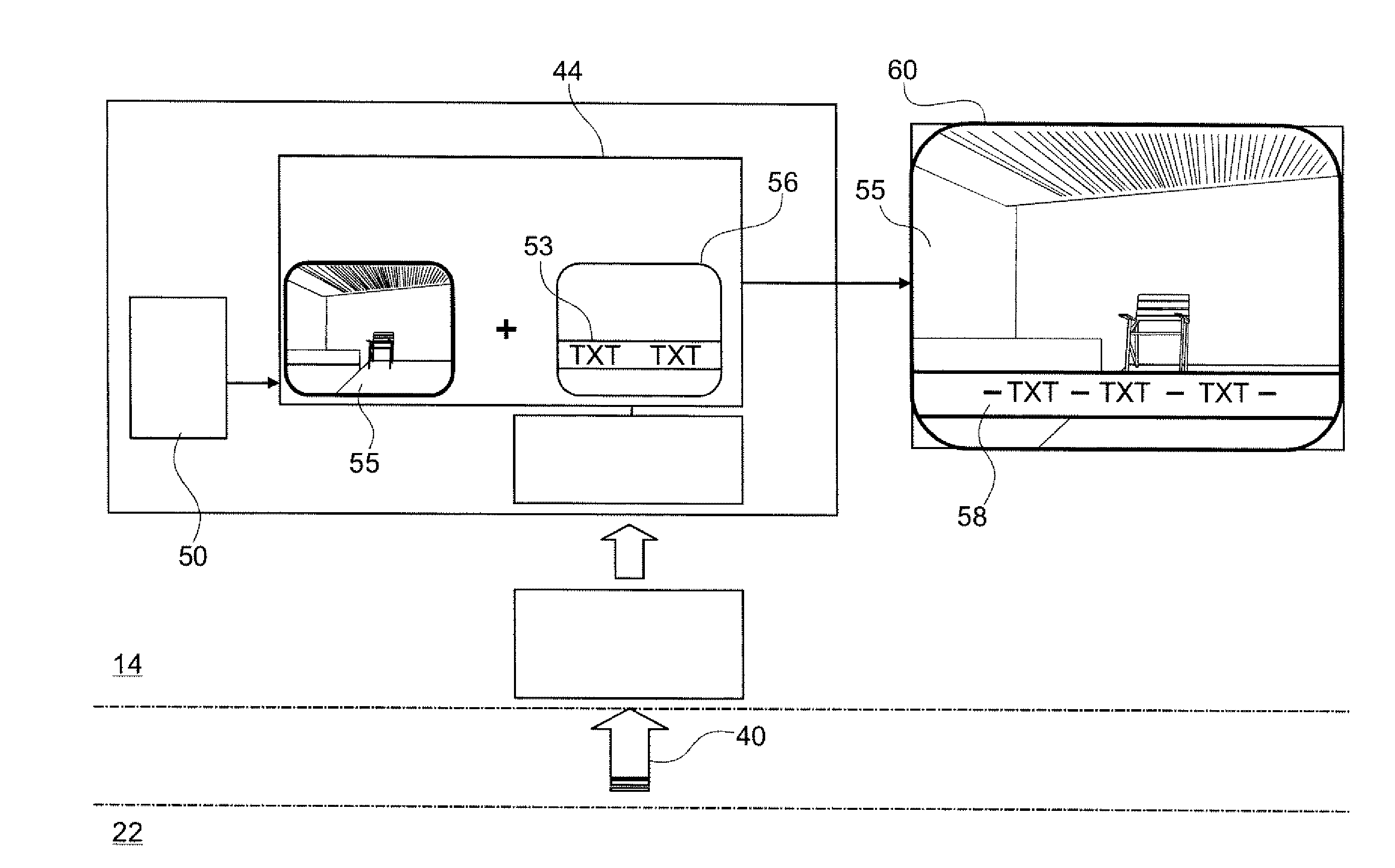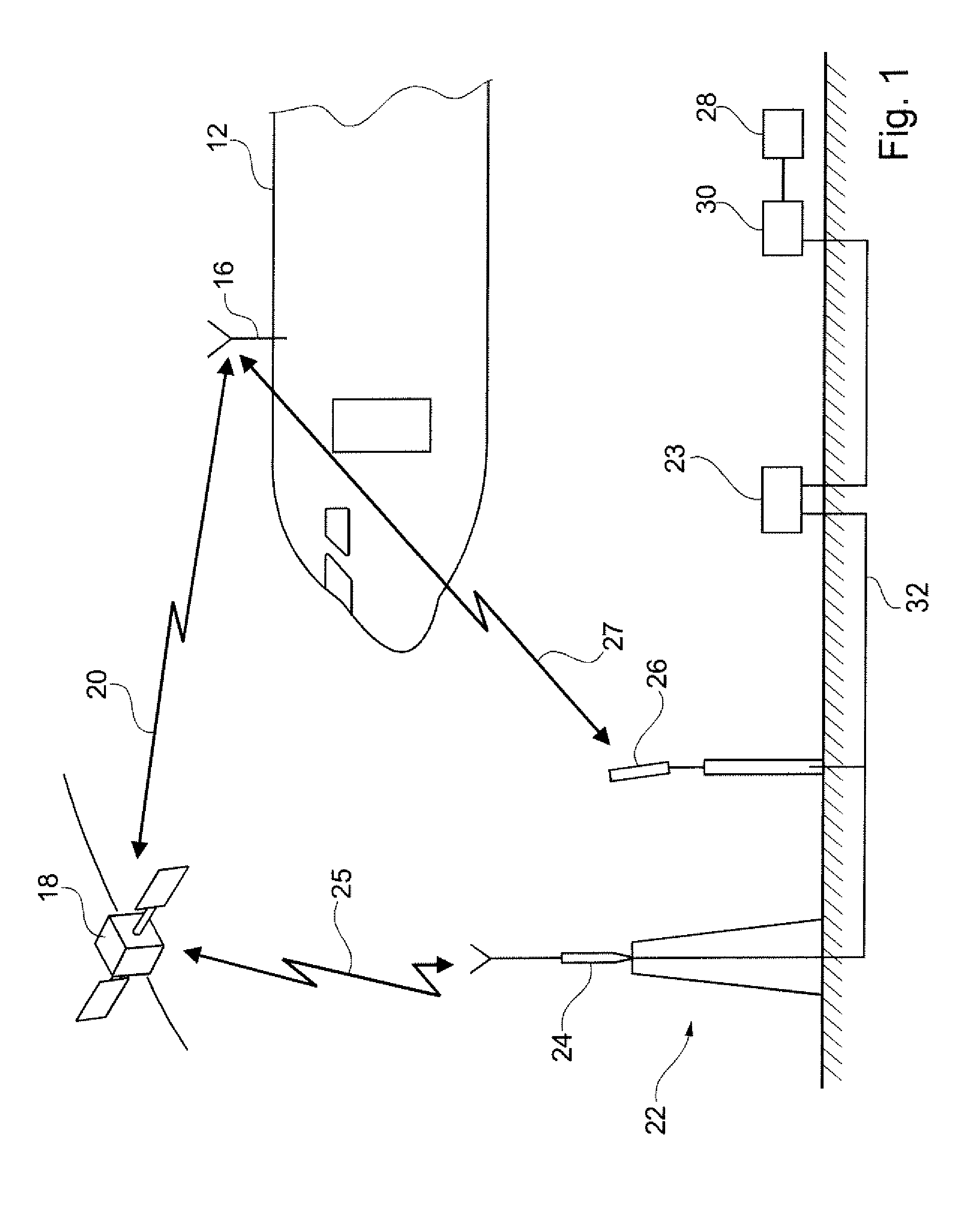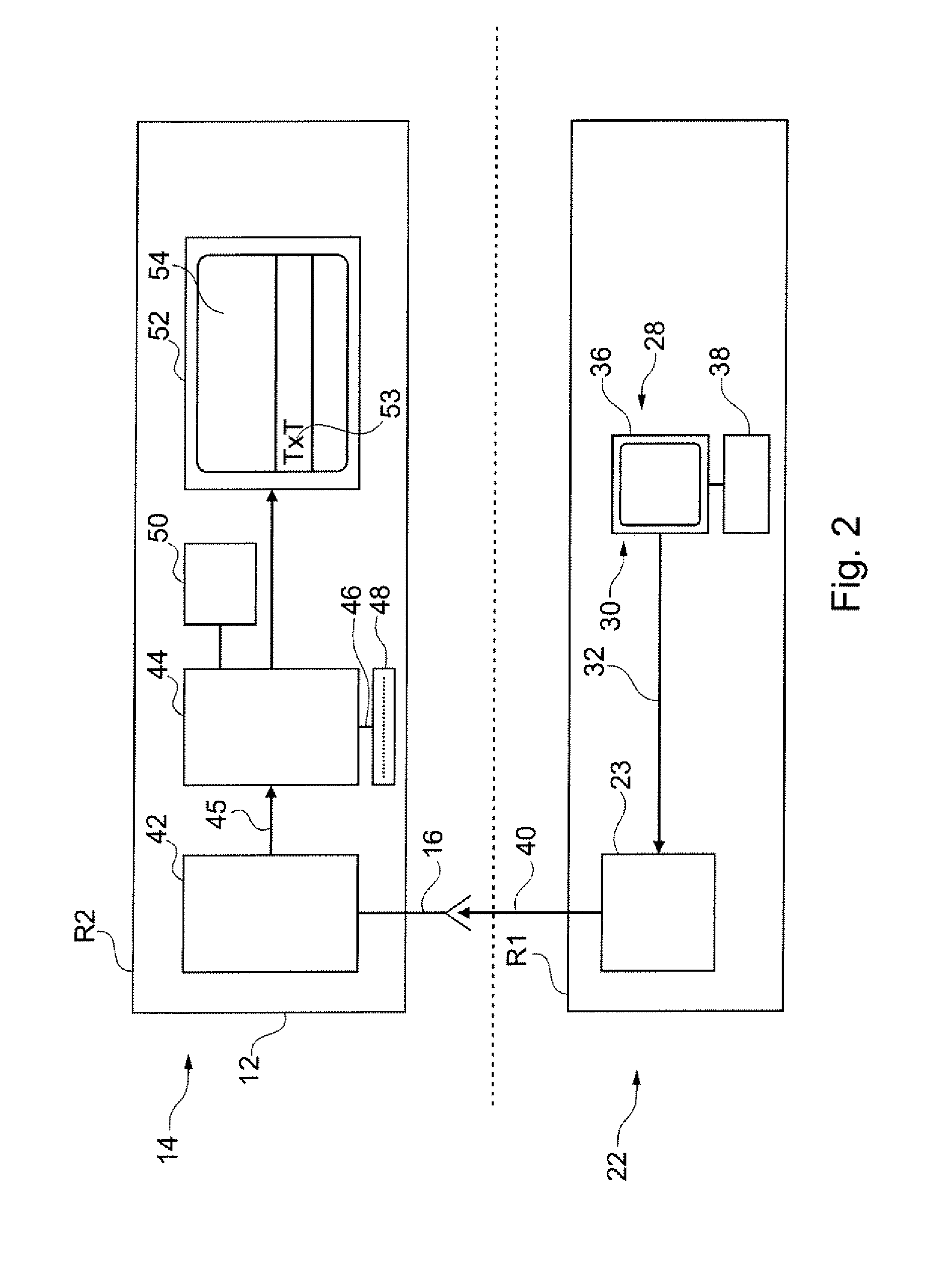[0010]In a further exemplary embodiment the information is image information, and the message is an MMS message in the MMS (
multimedia messaging service) mobile communications standard. The system is thus able to provide image information, and at the same time to keep the data quantity to be communicated as small as possible, for example in order to ensure fast transmission times and low operating costs.
[0014]In a further exemplary embodiment the
receiver on board the aircraft comprises a
GSM module that only comprises a receive function, for example a pure SMS- or MMS receive function. This technique involves economical and proven components. As a result of the reduction to a receive function only, simple and robust technology is provided, which furthermore is also weight-optimised and space-optimised, which is of central importance in aircraft. If a
GSM module is already
on board for other reasons, this
GSM module can be utilised to the extent that only its receive function is used.
[0018]The use, according to an exemplary embodiment of the invention, of an
information system according to one of the exemplary embodiments described above, in an aircraft, is associated with an
advantage in that even during flight operation current information can in a simple and economical manner be provided within the aircraft.
[0019]Furthermore, according to an exemplary embodiment of the invention, a system for the transmission of information to an aircraft is proposed, which system comprises an
information system for an aircraft according to one of the above exemplary embodiments, as well as a
ground system for
data processing, wherein the
ground system provides an
input device for inputting the information, and a
data processing unit that adds the further header to the input and makes said prepared input available as the message body of the message in the mobile communication standard, as well as comprising a
transmitter that transmits the prepared message. The ground system is essentially based on economical components so that, as a supplement to the information system described above, an economical and also reliable overall system for
information transmission to an aircraft can be provided, which system is eminently suitable for operation by an aircraft operator, and into which system even aircraft from different countries can be integrated. For example, the ground system can also be operated by a subsidiary or a separate operator. Available services from third parties can be used for communication between the ground system and the information system of the aircraft, so that no additional measures are required. For example, the
transmitter of the ground system can be connected to a telecommunication services provider by a terrestrial
data transmission network. Said telecommunication services provider in turn also provides the data communication with the aircraft, for which purpose in particular situations, for example on ground in the parked position and possibly also on the taxistrip, in the taxi phase, terrestrial
radio networks as used for mobile telephone devices are also suitable. In order to take into account security-relevant aspects an interface on board the aircraft can be provided, which automatically interrupts or switches off the radio connection if required; for example the receiving module can be automatically switched off during
takeoff and landing procedures, during which the safety requirements relating to possible sources of interference are particularly stringent. Furthermore, it is also possible to switch the radio connection to the terrestrial radio network off if a particular
flight altitude is exceeded, wherein the
flight altitude can be provided by the on-board
altimeter. For greater flight altitudes or in areas without network coverage,
satellite systems are suitable for establishing a
communication link with the receiver on board the aircraft. In particular, in the links just mentioned, the small quantity of data results in significant savings in operator costs when compared to large-volume
data transport.
[0026]In an exemplary embodiment of the method an image is shown with the information, for example text information, overlaid, wherein the image is stored in a
database on board the aircraft. In this way presentation of the information that is attractive to the passengers or the
crew and that at the same time is informative can be achieved, which information can also easily be integrated in the individual appearance of the aircraft in that the underlying images can conform, for example, to the corporate identity as well as to any other type of content. Instead of using one image, it is also possible to use several images or moving images, i.e. videos as underlying images.
 Login to View More
Login to View More  Login to View More
Login to View More 


